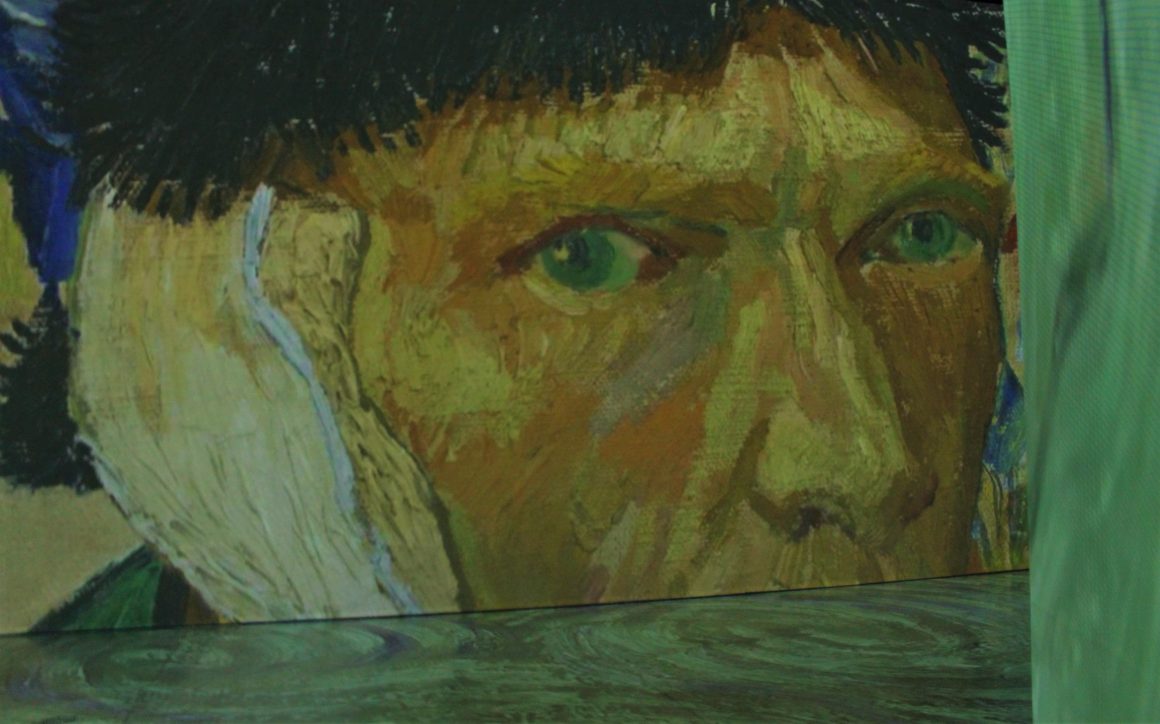
Beyond Van Gogh offers a unique way to experience art
By Ava Zardynezhad, August 3 2021 —
Beyond Van Gogh: The Immersive Experience has finally arrived in Calgary. The exhibition previewed on July 29 at the BMO Centre. Here at the Gauntlet, we had an opportunity to check out the exhibit before it opened to the masses.
Over the recent years, there have been many similar experiences designed by various organizers. Beyond Van Gogh: The Immersive Experience is one of them. This idea originated at the Montreal-based Normal Studio.
“We’re a digital art, creative studio. We do all sorts of projects — we can do immersive experiences like this, could be TV shows, [or] content for human performances. We’re specializing in story telling using technology and visuals,” said Sébastien Grenier-Cartier, partner and CEO at Normal Studio.
This is not the first major artistic project of this magnitude that Normal Studio has taken over. In the past, they have collaborated with institutions such as Cirque du Soleil and the Montreal Symphony.
“I think from a creative point of view, what’s interesting is that if you talk about the project of [the Diary of] Anne Frank or we even got the chance to work on Toruk, the Cirque du Soleil show about the movie avatar, the experience from a user’s point of view is that you are sitting in an audience looking at something. Or you’re outside looking at something. In [Beyond Van Gogh], the creative process — the mise-en-scene of the experience — is a free roaming experience,” Grenier-Cartier explained.
This means that the artistic approach to production would also have to be changed to accommodate for the free-roaming, immersive nature of the experience.
Despite the variety that exists in immersive Van Gogh exhibitions in Canada and around the world, Beyond Van Gogh ensures originality with their fresh take on the concept.
“Diving into this project — or venture, I should say — it was clear for us that we wanted to tackle it, from a visual standpoint, in a different way than other [immersive Van Gogh exhibitions] have done. So, we really tackled the content in a dialogue perspective,” said Grenier-Cartier. “It’s really a dialogue between Van Gogh and ourselves — his classic point of view on visual arts and ours, as contemporary artists.”
Beyond Van Gogh also stands out when it comes to the format of the exhibition as well as artistic differences in their immersion aspect. As Grenier-Cartier explained, the exhibit’s done in three rooms. The first room is the education room, where you can read and learn about Van Gogh, his life and his creative process. The next room featured “the waterfall,” which is specific to Beyond Van Gogh and is the audience’s first encounter with the immersive aspect of the exhibit.
“For us, it was important to have a first, onboarding aspect of going through the image,” said Grenier-Cartier. The waterfall is the beginning of the immersive experience where digital images — literally — wash over the audience as they spill down the wall and onto the floor.
Following “the waterfall” we enter the main immersion room, where the magic happens.
Like everyone, we began our journey into Van Gogh’s world at Hall F of the BMO Centre. After receiving our thematically designed passes, we followed the signature yellow carpet, and entered the education room through a framed doorway, as if we were literally stepping into a painting. The education room included a brief biography on Van Gogh, as well as excerpts from his letters to his brother, Theo. These were projected on screens, on top of pieces of Van Gogh’s paintings. The biographical information was ordered in a maze with signs that read “Gogh this way” guiding us through the years as we learnt about Van Gogh’s short but eventful life. Learning more about the artist before entering the immersive experience, especially reading his quotes, made us appreciate the art even more. There is a poetic quality about his words that is certainly reflected through his art.
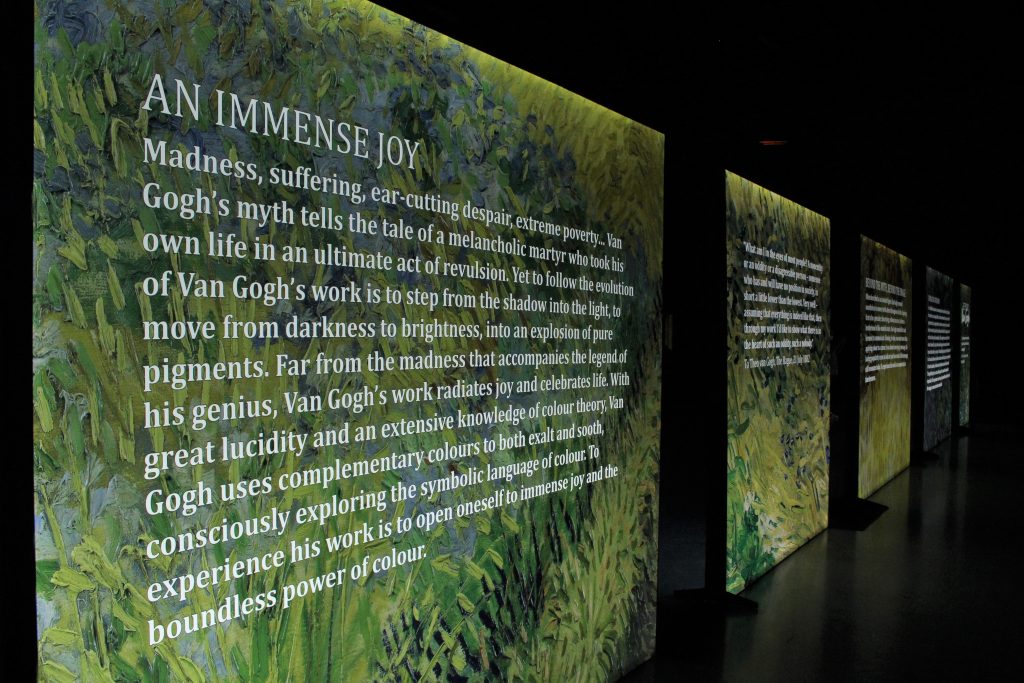
After the education room, we stepped through another frame, into “the waterfall.” As we walked in, light and colours drizzled down from the ceiling, down the wall and onto the floor and below our feet. Through “the waterfall” we found our way into the immersion room, where we were promised a 30-minute long show featuring 300 pieces of Van Gogh’s paintings.
First, we were mesmerized by a series of self-portraits that were brought to life digitally. All around the room, we were surrounded by Vincents that were blinking while looking right at us. From the very beginning, it felt like the paintings were breathing. Everything — as small as the smoke from his pipe or the strokes of paint on his face — was alive.
In my opinion, the exhibition was very cleverly structured. The more I think back on it, the more it blows my mind. The experts and information selected for the education room were brilliantly reflected in the immersive experience through the transitions that were used. The biography provided included information on Van Gogh’s life in the countryside and the inspiration he took from nature in his art. We read an expert from a letter Van Gogh sent to his brother during his time in Arles, France. He had written, “I find painting hard work because of the wind, but I fasten my easel to pegs driven into the ground and work in spite of it, it is too lovely.” This was reflected in a country landscape changing to another using wind as a transition. The first painting rippled and was blown away into the next.
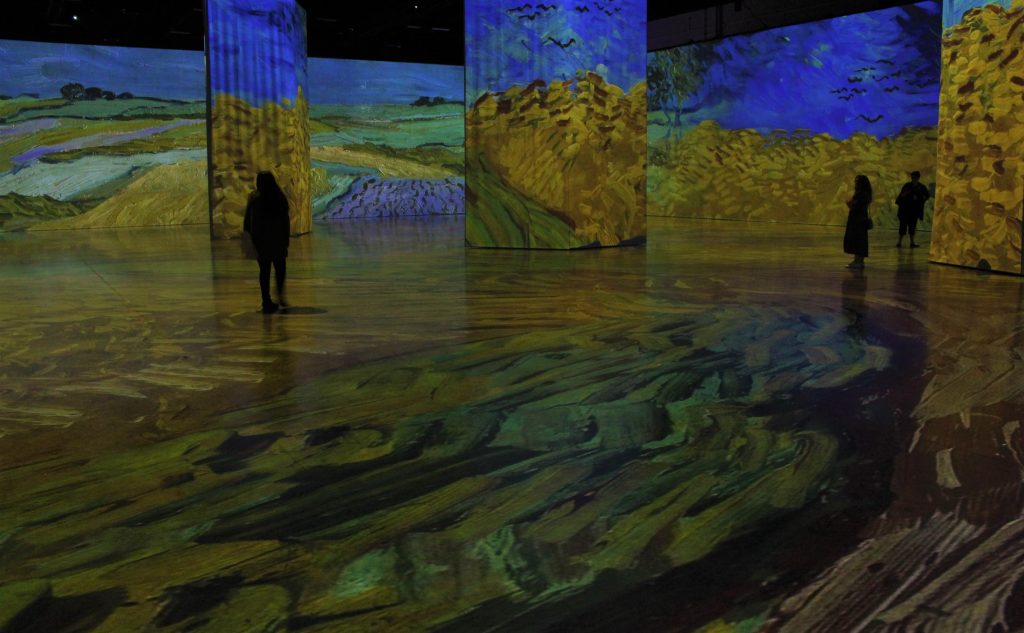
Similarly, the education room included a quote about how Van Gogh’s croquis turned into sketches and then paintings. This idea was used as a transition where first, paintings were sketched on the walls and were then painted over.

“The transitions, the way we tackled the visuals, the way we allowed ourselves, with respect to Van Gogh’s art, to adapt and change his paintings to be able to really fit [them] to the canvas and also the transitions from scene to scene is something that really differentiates us from the other exhibits out there,” Grenier-Cartier said. “We didn’t want a passive experience of just looking at paintings.”
I can attest — my experience was anything but passive. The exhibit works on so many levels to keep the audience engaged throughout and to forge a relationship between the individual and Van Gogh. There are so many details in the animation and transitions that I can’t possibly fit in one article. However, the use of digital art in this exhibit as well as the innovations that come with it are absolutely breathtaking.
Another aspect that contributed to the impact of this experience was the choice of music.
“We really took time to see how we could create a soundtrack that will accompany these visuals,” said Grenier-Cartier. “We wanted to make sure, first and foremost, that you could see the technology, feel the technology but you wouldn’t think it’s a projection — it’s like an image that you dive into. I think one of the reasons that it works so much is that the soundtrack is really well merged, so you don’t think you’re listening to something and looking at something else, but rather, you’re experiencing a movie, in a sense.”

The soundtrack features some classical music, but also contemporary music such as music from The Shape of Water as well as instrumental versions of well-known songs such as The Beatles’ “Here Comes the Sun,” and Don McLean’s “Vincent” — which was actually written about Van Gogh. I thought the music worked really well with the immersive experience. When we were reading in the education room, I was very aware of the music. But when we got to the immersion room, everything blended together and it was more of a holistic experience. Rachneet had a different experience. She mentioned that she didn’t notice the music at all, which speaks on how well it blended with the visuals.
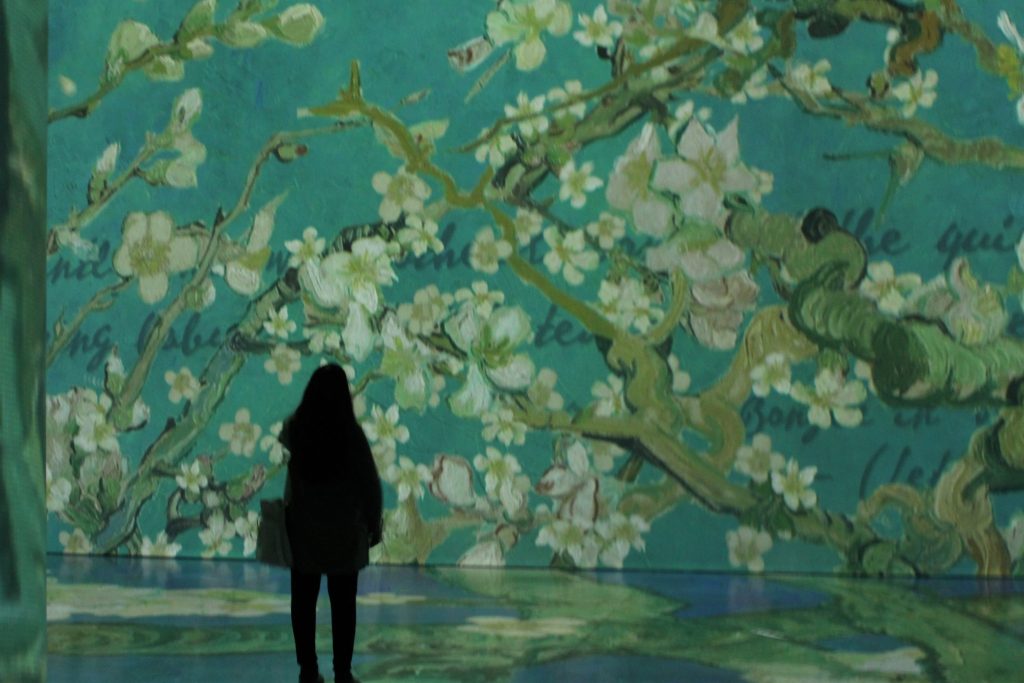
The soundtrack also included sound effects. As mentioned before, where the transition imitated wind, you could hear the wind blowing through the audio. Later on, when Van Gogh’s portraits were exhibited, we started with a dim-lit room and then with the sound of light switches being flicked on, the portraits were illuminated one by one. It was little details such as this that made this exhibition impactful and impressive.
So, why does everyone seem to be obsessed with Van Gogh these days? Well many of the artist’s paintings are now in the public domain, which makes them available for use without having to acquire the rights. However, Grenier-Cartier explained that there are other reasons behind this choice, specifically the “digitalized nature” to the way Van Gogh portrays the world.
“It was really easy for us to dive in and use his paintings, duplicate them and then swap them to really create that immersiveness. I don’t think all of the painters have that ability. Some of them are a bit more flat […] so you couldn’t create a story or an experience as tailored as this.”
Now you might be asking, what’s the point of having a digital exhibition of art that might be better experienced at a museum?
“I feel like sometimes we feel intimidated by the process of going to a museum. The relationship [between the audience and the painting] could sometimes be cold. What we’re proposing is something different. We’re not saying it’s better, it’s just a different alternative to really understand the art,” said Grenier-Cartier.
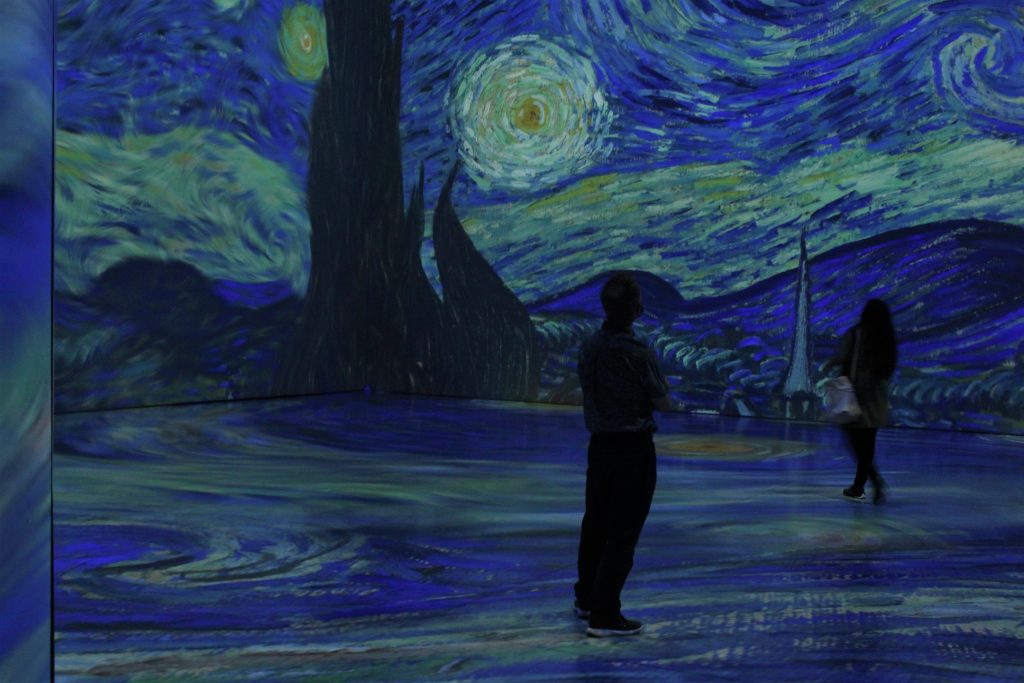
Is this post-modernist approach to art where the future is headed? Grenier-Cartier believes it will only grow bigger from here.
“We’d like to say this is between a theme park experience and a concert experience. We truly believe that the access to technology, the ease of people interacting with them and feeling comfortable in settings like this will keep pushing this type of entertainment forward.”
We really enjoyed this exhibition. It was definitely an experience that left a lasting impression. The addition of fun activities and incentives for the audience, such as a painting station and complementary sunflowers, made this an incredibly fun afternoon for us. If you are able to, we’d highly recommend checking out Beyond Van Gogh. But, remember, it’s only here until Aug. 30, so get those tickets while they last. Keep in mind, tickets are only available on their website and due to COVID-19 regulations and requirements, tickets are timed and must be booked in advance. Be sure to take a mask with you and follow social distancing recommendations.
In a letter sent to his brother in November of 1885, Van Gogh wrote, “I’d like to walk with you there to find out whether we look at things the same way.” That’s how we feel about this exhibit. If you do end up visiting the exhibition, we’d love to hear your thoughts about it! Reach out to us via email or on our socials and let us know how you liked it.
